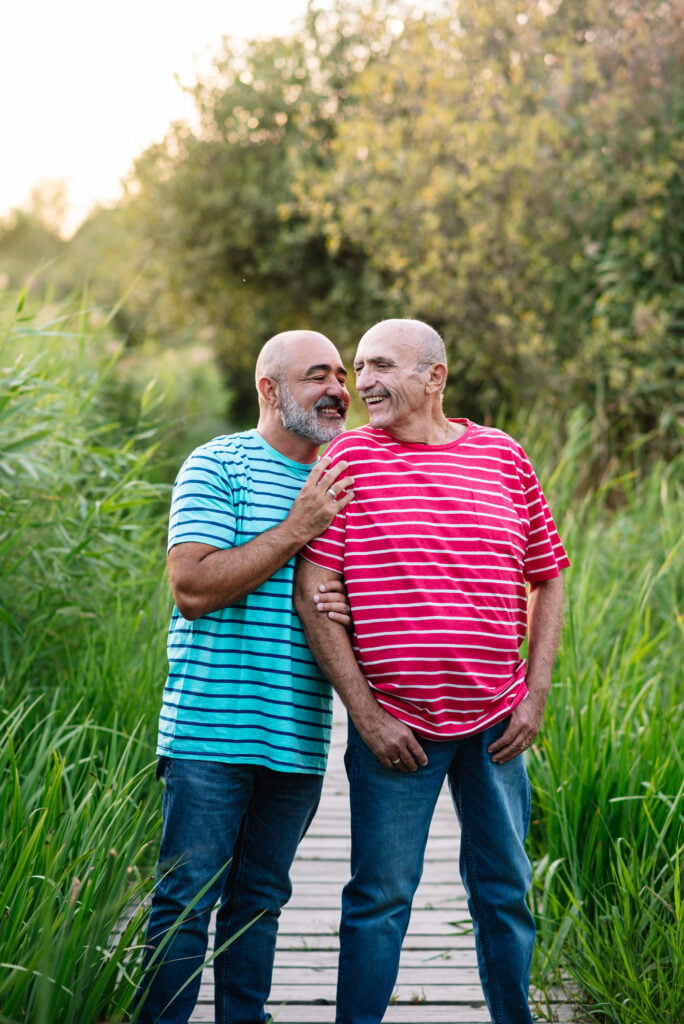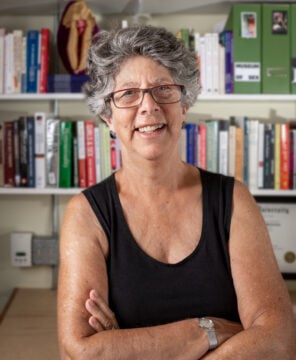Part 1: What We Can Learn from the Origins of Pride
Happy Pride Month! Every June we commemorate Pride Month to honor the lives and struggles of LGBTQ+ individuals. The first Pride march, which was called the Gay Pride Liberation March, occurred in New York City in 1970. Since then, Pride has been celebrated by millions all over the world and has evolved over time.
Upon entering an assisted living community or similar setting, we bring our history with us. For our LGBTQ+ neighbors and friends who have lived through repression, moving to a senior living community often means the coming out process begins all over again. To understand LGBTQ+ seniors, it’s important to understand their history.
Origins of Pride at Stonewall
The first Pride march commemorated an act of resistance that sparked the modern LGBTQ+ rights movement, the Stonewall Rebellion. The Stonewall Rebellion began on June 28, 1969. It wasn’t a rally where people took buses on a certain time of day. The rebellion was sparked by a police raid at the Stonewall Inn on Christopher Street in New York City.

Activists have said it was just time, after years of police harassment, when something had to change. In those days, it wasn’t legal for bars to serve alcohol to homosexuals and, on a regular basis, the police would conduct a raid on Stonewall and other bars that catered to homosexuals.
After a raid, the police would fill paddy wagons with patrons of the bar who faced legal prosecution, evictions, loss of employment or family, and public humiliation based on their sexual orientation or gender identity. It is hard to describe today the fear that many faced if they were publicly outed in this way.
Something different happened that night at Stonewall. No one quite knows why. Yet many have surmised that the uprising occurred in the midst of many other liberation movements, including the women’s movement, the anti-Vietnam war movement, the Black liberation movement, the environmental movement, and other human rights efforts.
Researching a book I wrote about the history of Stonewall and LGBTQ elders, I looked at the roots of the rebellion and asked a leader in the transgender rights movement, Miss Major Griffin-Gracy, a Black trans woman who was at the Stonewall Inn the night of the uprising to explain it from her own perspective:

“As far as the incident at Stonewall, people have the tendency to think that it was some kind of planned event, or it was some kind of riot. It wasn’t a riot! We were fighting for our survival. Because at the that time, you had to wear three articles of men’s clothing if you were a trans woman (or you could be arrested for crossdressing). You had to have three articles of women’s clothing if you were a trans man. What wound up happening was, it was just one of those nights when it wasn’t going to happen like it usually had. Usually, when the cops came in, the nightstick hit the door jamb and you filed out. What happened that night was when the cops came in, no one got up and no one got out and moved away. You know what I mean? And it was just a feeling of…things are different tonight. And you could feel it in the air.”
My First Pride March
I remember my first pride march like it was just yesterday. It was 1982 and I was studying at UMass Amherst in the Labor Studies graduate program. A few of us from the program were “out” at the time and planned a march in downtown Northampton, MA. It was barely a march. There were so few of us. Someone heckled us. Someone else threw something at us from the sidewalk.
One of the marchers wore a paper bag over her head. She was afraid of losing her job as a teacher. It was a scary time. We didn’t expect many people, just a handful attended. Maybe 25 to 50 in all. After the rally, we were proud that we could say to our community that we are here and a part of you. And that little pride march has continued over the years to grow. I’ve marched in it with my kids, my partner, my synagogue, my neighbors, and friends. You can learn more about that first march here.

Pride Today
Today, my local event has expanded to become Hampshire Pride, which boasts an annual gathering of more than 50,000 people with friendly onlookers, corporate and nonprofit sponsors and vendors, dozens of performers, and contingents from pre-schools to senior living and health care.
Like many Pride events, Hampshire Pride is now a family-friendly, festive event. There are similar Pride marches all over the U.S. and abroad. Outright International has estimated that over 100 countries now have Pride marches or rallies. On the other side of the picture, there are 92 countries where Pride marches are not held due to hostile laws or attitudes that continue to put people’s lives in danger for just being who they are outside of their homes.
Since 1970, the nascent gay liberation movement has become more inclusive and has won significant legal and cultural changes. These changes have extended to more open and affirming communities. In fact, several senior communities — including each Senior Living Residences Community —has adopted a staff development and training program which strives to build bridges between staff and LGBTQ+ residents and families by telling real stories and forming connections on a human level.
As we begin to take in each others’ history, we lay the groundwork for more understanding in the future. If you’re interested in where Pride is today, keep an eye out for Part 2.
Resources for LGBTQ+ Elders and Allies
SAGE has been fighting for and with LGBTQ+ elders since 1978 and has numerous ways for you to learn and get involved.
SAGE and Human Rights Campaign Foundation have teamed up to create a long-term care equality index to protect LGBTQ+ elders.
PFLAG The NYC chapter of PFLAG has an online group for grandparent or an elder in an LGBTQ+ person’s life. You can be an ally and uplift, honor, and support an intergenerational bond. They meet every Monday night, open to all.
The Stonewall Generation: LGBTQ Elders on Sex, Activism, and Aging You can read more about pioneers in the LGBTQ rights movement here.


 Dr. Jane Fleishman
Dr. Jane Fleishman